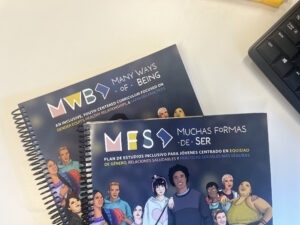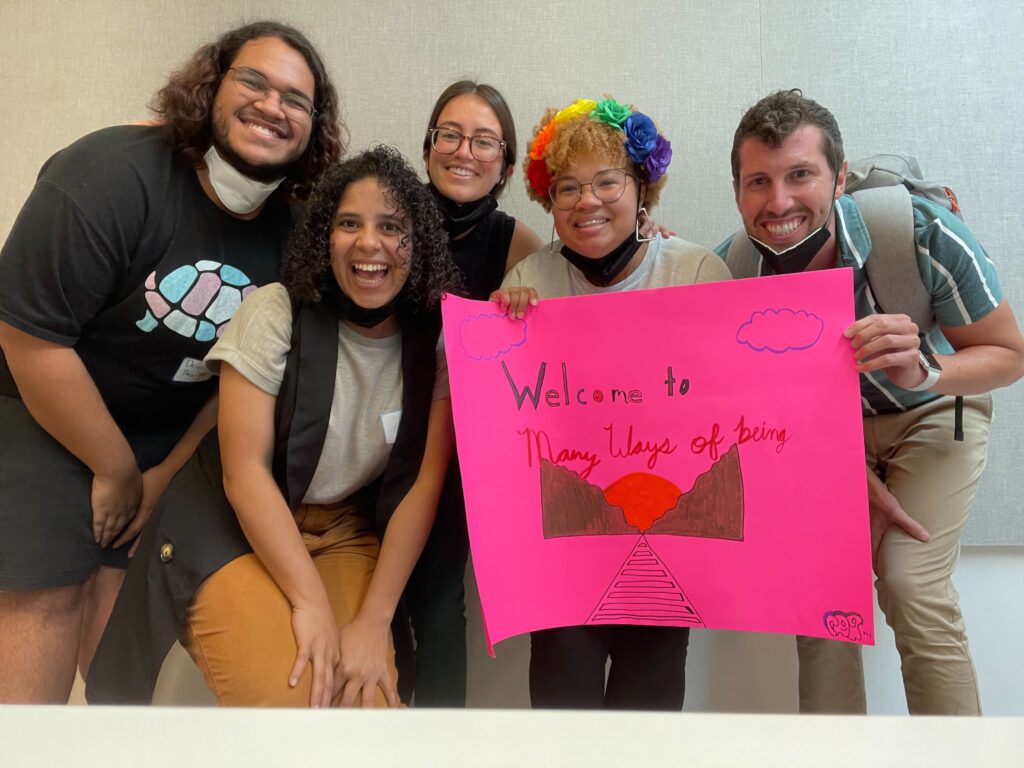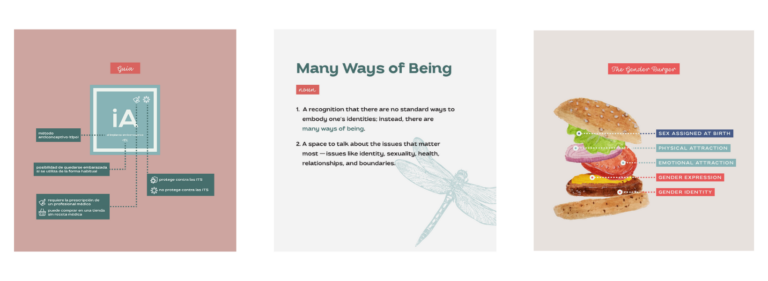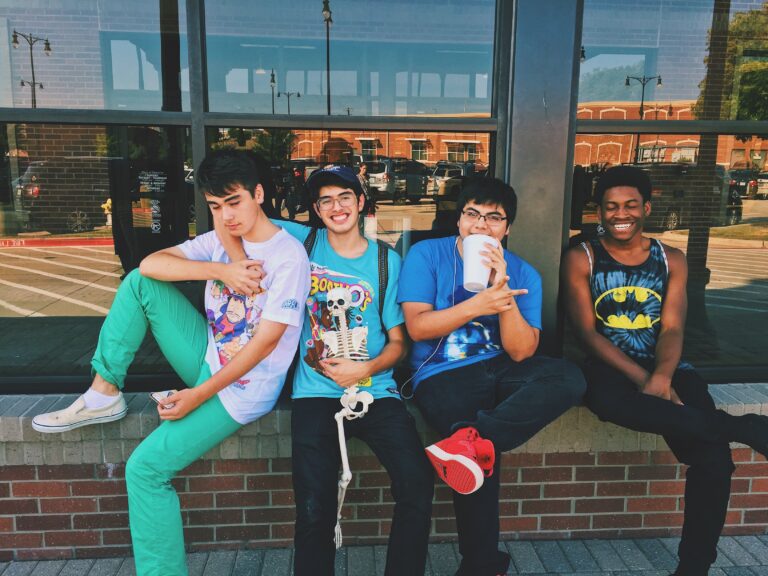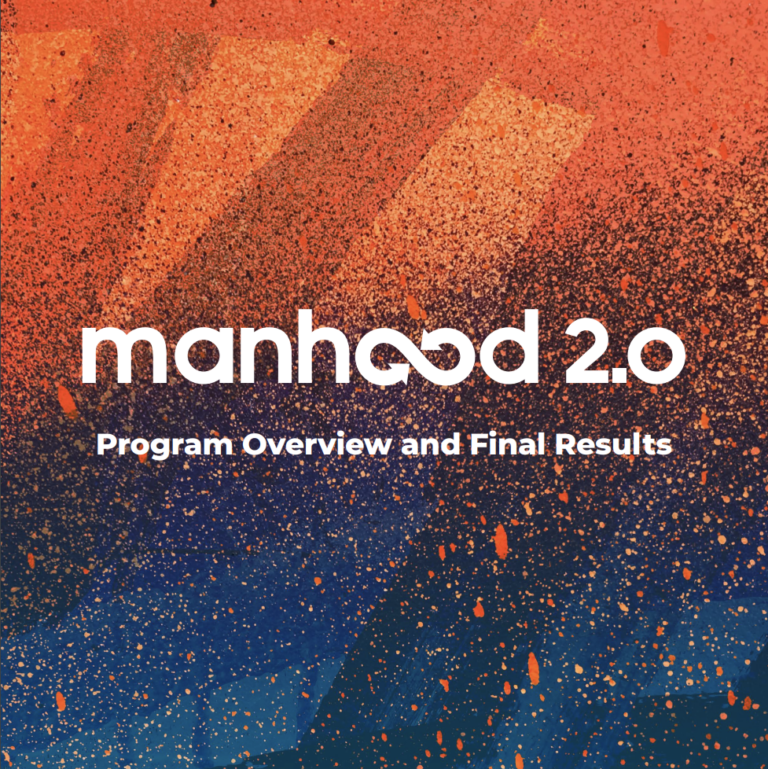In a world where conversations around sexual and reproductive health can be shrouded in stigma and secrecy, it’s essential to create safe and inclusive spaces for young people to explore these topics and empower themselves with accurate information. Many Ways of Being (MWB), a program designed to change the way we educate youth about their bodies, relationships, and the world around them, was created to do just that. In this blog, Dereck Myers, Youth Developer at the Latin American Youth Center (LAYC), and Cody Ragonese, Senior Program Officer at Equimundo talk about the background, content, process, impact, and the vision of MWB to understand how it’s transforming the lives of the youth it serves––and the lives of the facilitators implementing it.
The Roots of MWB: A Story of Collaboration and Inclusivity
MWB is part of a longer line of programs implemented by LAYC, Child Trends, and Equimundo. It all started with Manhood 2.0, a program designed to address high STD rates, unplanned pregnancies, and a lack of comprehensive sexual and reproductive health education in schools. The lessons learned from Manhood 2.0 served as the foundation for MWB, with a key emphasis on inclusivity.
Based on feedback from Manhood 2.0, MWB recognized that single-gender programming could be exclusive for non-binary and trans youth, so it made inclusivity, progressiveness, and being gender-transformative core principles. As such, MWB strives to provide a safe space for all –– all gender identities, sexual orientations, and cultural backgrounds. It’s a program that promotes an environment of acceptance, understanding, and expansiveness.
MWB: Designed for the Community, by the Community
MWB was designed with the Washington, DC community in mind, which has a significant Black and Latino population. It was essential that the curriculum not only be accessible in terms of language but also culturally relevant. MWB addresses issues like intersectionality and racism that are often ignored in traditional sexual and reproductive health education, but which have had very real impacts on people of color’s access to and quality of medical services, known in the field as medical racism.
“This curriculum really needed to reflect not only the experiences that [youth] have in their individual lives, but it was also able to connect with them in a way that made sense, that centered them and gave them space to talk about these things, without being segregated by gender or race.” –Dereck
The program was created precisely for Black, brown, and queer youth who are often underserved when it comes to sexual health education. It aims to break down stereotypes, empower youth, and challenge the norms and biases they face every day. The youth involved in MWB are given the tools and language to question the status quo and advocate for themselves, their communities, and their rights.
“Additional barriers to healthcare, to accessing contraceptives and reproductive justice exist for Black and brown youth, and in designing the curriculum, using a social and racial justice lens, it was really important to concentrate on the people whom the system has marginalized over the past centuries and provide them with the resources and knowledge and skills to overcome those barriers as much as they can.” –Cody
The Heart of MWB: What It Aims to Teach Youth
At its core, MWB is about equipping young people with the skills and knowledge they need to lead healthy lives, build healthy relationships, and navigate the complexities of sexual and reproductive health. It seeks to move beyond a fear-based approach and promote a sex-positive, empowering form of sexual education. This means exploring topics such as sexual orientation, gender identity, pleasure, and open communication.
“This is a US Department of Health and Human Services grant-funded project, which has an aim to reduce unwanted pregnancy – that along with STI reduction. But we’re really trying to pivot from that risk- and fear-based approach to one that equips youth with the skills and knowledge to live out healthy relationships, to have healthy forms of communication, to know what to do about those topics.” –Cody
According to Dereck, the program teaches youth that they have the power to shape their lives, that they can access sexual and reproductive health education without fear or judgment, and that they have the right to information. It’s not just about reducing unwanted pregnancies and STIs; it’s about breaking down stereotypes and giving young people the confidence to challenge them.
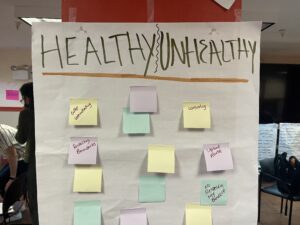
Unlike any Other: What Sets MWB Apart?
MWB is different from other Equimundo programs in several ways. It’s more inclusive when it comes to gender and sexual orientation, making it more relevant for the diverse needs of the community it serves. It’s also tailored specifically to the DC setting, incorporating local resources and addressing the unique challenges faced by Black and brown youth in the area. Furthermore, the program focuses on challenging the gender stereotypes that persist in society.
“This curriculum teaches youth that they have power themselves, that they have the ability to have autonomy, that spaces don’t have to be youth-unfriendly, and that they have the right to access sexual and reproductive health education… A lot of youth are really frustrated by the things that they see, including harmful gender stereotypes, which might be from parents, siblings, friends. Youth want more equity and the program teaches them that they can challenge harmful stereotypes by giving them some of the tools and the language to be able to do so.” –Dereck
The Journey to Create MWB: Formative Research and Collaboration
The development of MWB began with formative research, led by Healthy Teen Network, to understand the priorities and needs of local youth. The curriculum was designed based on the feedback, demands, and priorities of youth, resulting in a curriculum with topics around pornography and sexually explicit content –– themes that had not been addressed in previous Equimundo curricula.
Throughout the development process, LAYC and the youth themselves were actively involved in refining the curriculum to ensure that it resonated with the target community, launching the curricula in English and Spanish in early 2023.
Lessons Learned: Insights from Design to Implementation
The journey of MWB was filled with valuable lessons. One key lesson was the importance of making the curriculum relatable to youth. The program needed to reflect their interests, experiences, and priorities. This meant including examples of same-gender relationships, non-binary individuals, and addressing topics like disability access.
MWB also needed to be available in multiple languages and formats, ensuring that everyone could access the information. This included accommodating students with disabilities and learning accommodations.
Finally, the program emphasized the importance of not just providing information but teaching young people how to apply it in real-life situations. Role-playing exercises were included to help youth navigate difficult conversations and situations, such as disclosing HIV or STI status or negotiating condom use.

One other lesson learned from implementation was around community. Indeed, Dereck shared that “it takes a community, not just a class or a program, to have these types of changes. The framing of Many Ways of Being really lends itself to that community building” – and the desire for and importance of community was borne out in the perceived impact of the program.
Impact: Changing Lives and Building Community
Dereck and Cody reflected on some of the changes they witnessed during the pilot of the program. One of the most significant changes has been in the way youth engage with each other. Many have had their “eureka” moments, challenging beliefs they once held:
“I’ve witnessed youth who have been on this eight week journey with me, who at the beginning, were saying comments that would probably be regarded as misogynistic, who by the end of the program had really changed how they were engaging with each other.” –Dereck
MWB’s impact has also seemingly gone beyond some of its goals of reducing unwanted pregnancies and STIs to fostering a sense of community and trust among the youth, and inspiring them to take that out into their communities.
And there weren’t only changes within the youth. For the facilitators involved in MWB, it’s been a journey of self-discovery and empowerment, as facilitating a curriculum with information they never received as youth themselves was “bittersweet,” yet “overwhelmingly healing.” The program has challenged them to show up authentically and to care for themselves as they care for the youth. The facilitators’ dedication has made a world of difference.
MWB: For A World of Equity and Empowerment
Ultimately, MWB is trying to create a world where youth can live their lives to the fullest, free from harmful stereotypes and biases. It’s about fostering a community where trust, open communication, and empathy reign supreme. MWB is planting seeds of thought, and these seeds have the potential to grow into a world of equity, empowerment, and pleasure, where everyone is free to be themselves.
Many Ways of Being has shown its potential to be a movement for self-empowerment and community-building. It’s a journey of self-discovery and transformation, aiming to prepare youth for a world where they can live their lives freely, equitably, and authentically – and inspiring their communities to do the same. This program is a reminder that education can be a powerful tool for building a better, more inclusive future – led by the communities at its core.
